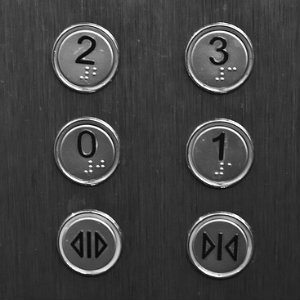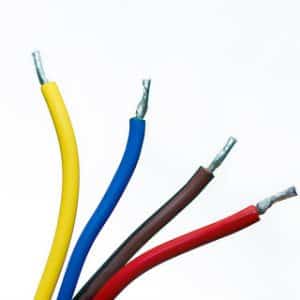Several months after an 81-year-old man was killed in a “lurching” incident in a public housing building overseen by the New York City Housing Authority, the agency has announced that it has replaced its Director of Elevators, Kenneth Buny. The news of the replacement came shortly after the Department of Investigation released a report indicating that they believed the fatal accident could have been prevented if the NYCHA hadn’t failed to communicate an issue with the elevator.
The DOI’s Findings
The accident, which took the elderly man’s life prematurely, occurred on Christmas Eve of 2015. The victim was boarding the elevator when it suddenly shifted, causing him to fall and hit his head. A neighbor found him crawling out of the elevator while bleeding profusely from his head wound. He was rushed to a nearby hospital where, despite the efforts of his doctors, he passed away several days later. An autopsy proved that his cause of death was bleeding in the brain directly related to his head trauma.
The neighbor who found him told investigators that the elevator has been consistently malfunctioning for years. “It could have been any of us. They (NYCHA) always claim they fixed it and it’s always the same.” she said.
According to the DOI, this certainly isn’t the first time that an issue has been reported to the NYCHA for that building. Less than a month before, another resident was injured when the elevator “jumped” and the impact of landing after being thrown broke his leg. Just two days before the accident, a NYCHA elevator technician responded to a different complaint and shut down the elevator system. He then replaced the regulator in the lift and restored service.
An hour and a half before the accident, a report had been made to the NYCHA regarding new issues with the lift, but the agency did not respond in a timely manner to investigate. The DOI also noted that, in general, the agency hasn’t been in compliance with city codes and they failed to correctly document necessary inspections and maintenance. A total of 14 recommendations were made, detailing how the agency could make elevators safer for residents in all public housing complexes.
NYCHA Employees Previously Reported Issues
Several years before this incident, six inspectors decided to take a stand and reported that their superiors instructed them to fake reports and ignore obvious safety issues. According to the whistleblowers, their bosses were more concerned with meeting a daily quota than actually addressing dangerous conditions.
One inspector said “Let’s say I went into a building and found eight violations. They would ask me not to put them all down. Without a doubt, this was because they needed to make the quota.”
Another inspector was charged with failing to file inspection reports and for allegedly threatening to take his supervisor’s life. At his disciplinary hearing, he testified that “Whenever I see motor room doors unsecured, I was asked to move on. Whenever I see stop switches broken, I was asked to move on. Whenever I see zone locks broken, I was asked to move on.”
A review of his inspection records shows that many of his inspection reports indicate more than twice the number of safety issues then were addressed by the NYCHA in official work orders. He alleges that the argument he had with his supervisor was simply about being told to ignore serious issues and that he never threatened him. The supervisor he argued with was Kenneth Buny.
NYCHA Employees Also At Risk
One the same day that the announcement was made regarding Buny’s replacement, a 54-year-old elevator mechanic helper was found unresponsive by his coworkers in the elevator machine room on the roof of Coney Island Houses. When paramedics arrived on the scene, he was pronounced dead. While an official cause of death has not been announced, it is believed that he may have been electrocuted.
Common Causes Of Employee Injury

- poor maintenance
- exposed wiring
- pulley system failure
- malfunctioning doors
- speed malfunction
- sudden drops in the elevator shaft
- gaps which result in falls into the shaft
Legal Rights Of Victims And Their Families
Anyone who has been injured in an elevator accident or the loved ones of a victim who was fatally injured in an elevator accident, have the right to learn more about their legal options. Generally, three types of claims may be pursued:
Workers’ Compensation Claims
If the person who was hurt was working at the time of their accident, they have the right to file a workers’ compensation claim. If approved, these claims can provide the employee with payments for their medical expenses and in some cases, a portion of lost wages. The process of applying for this coverage is not simple and a large percentage of these claims are denied every day. After a denial, the employee can appeal the decision, however, this too is a complicated process and frequently the issue takes months to resolve.
Personal Injury Claims
Personal injury claims are filed against the party whose negligence resulted in the accident that caused harm to a person. For example, it may be possible for the family of the elderly man who died to pursue a claim against the NYCHA for failing to provide the proper warnings and for failing to maintain the equipment. In some instances, it may be possible to pursue legal action against multiple negligent parties.
Wrongful Death Claims
If the victim of the accident died as a result of the injuries they sustained, their loved ones may be able to recover compensation for their loss. While this compensation can in no way replace a loved one or take away the pain of losing them, it can ensure that those left behind are not financially impacted.
Can I File Workers’ Compensation & A Personal Injury Claim?
Yes. It is possible to try and recover compensation through both a workers’ compensation claim and a personal injury claim. However, when an employee files a workers’ compensation claim, they give up the right to file a lawsuit against their employer. If an injury employee chooses to also file a personal injury lawsuit, it typically is against a third party who may also be responsible, such as the manufacturer of a defective part or a contractor who failed to correctly install or fix part of the elevator.
Do I Need An Attorney?
Even if you don’t intend to pursue legal action in the form of a personal injury lawsuit, a workers’ compensation attorney can help you correctly fill out the workers’ compensation forms so that you don’t risk a denial based on incorrect paperwork. If for some reason your claim has been denied, an attorney can represent you at the appeals hearing.
If you do wish to explore the possibility of a personal injury lawsuit, an attorney can review your case and explain all legal avenues available to you. In addition to this, an experienced elevator accident attorney typically is in contact with expert witnesses such as engineers, elevator inspectors, and medical professionals who can testify as to what the cause of the accident was and how debilitating the resulting injuries are. In the majority of cases, the knowledge and experience that an attorney provides means that a much larger settlement or verdict can be obtained than the victim would have been able to recover on their own.

